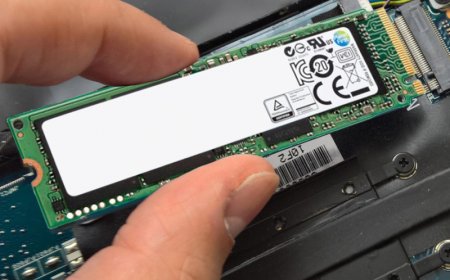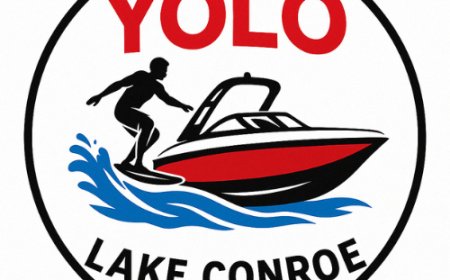Engaging Gamification Loyalty Programs to Boost Retention
A gamification loyalty program provides a creative solution by turning customer engagement into an enjoyable and rewarding experience.

Customer loyalty is an essential element of any successful business strategy, and keeping customers engaged has become increasingly challenging in today's competitive marketplace. A gamification loyalty program provides a creative solution by turning customer engagement into an enjoyable and rewarding experience. By combining game mechanics with loyalty strategies, these programs encourage repeat interactions, foster emotional connections, and significantly improve retention rates.
Gamification, when applied to loyalty programs, enhances user experience by adding elements such as points, badges, challenges, and leaderboards. It transforms mundane activities like shopping or surveys into exciting opportunities for rewards, motivating customers to interact with the brand more frequently.
What Is a Gamification Loyalty Program?
A gamification loyalty program incorporates gaming elements into a traditional loyalty structure. Customers earn rewards not only for purchases but also for completing specific actions like leaving reviews, sharing on social media, or reaching milestones. These programs use intrinsic motivatorssuch as competition, achievement, and statusto keep customers engaged over the long term.
For example, a coffee shop might introduce a tiered system where customers earn badges for purchasing coffee on consecutive days. They could advance from "Casual Sipper" to "Latte Legend," unlocking discounts or exclusive perks along the way. This gamified approach creates a sense of fun while strengthening the brand-customer relationship.
Why Gamification Works in Loyalty Programs
Gamification taps into psychological principles that drive human behavior. Heres why its so effective:
1. Creates Emotional Engagement
Customers feel a sense of accomplishment when they complete challenges or earn rewards, fostering a deeper connection with the brand.
2. Encourages Repeat Behavior
The promise of achieving the next milestone or unlocking exclusive perks motivates customers to keep coming back.
3. Enhances Brand Differentiation
Unique gamified experiences set your loyalty program apart from competitors and make your brand more memorable.
4. Leverages Social Influence
Leaderboards and social sharing options encourage friendly competition and word-of-mouth promotion.
5. Drives Data Collection
By tracking customer interactions, businesses gain valuable insights into preferences and behaviors.
Incorporating these elements into a loyalty strategy leads to Boosting Retention, as customers are more likely to engage consistently with a gamified program.
Key Features of a Gamification Loyalty Program
To design an effective gamification loyalty program, consider including these essential features:
1. Points and Rewards
Award points for specific actions, such as purchases, reviews, or social media shares. Customers can redeem these points for discounts or exclusive offers.
2. Achievements and Badges
Introduce milestones that reward customers for completing tasks like frequent purchases or reaching a spending threshold.
3. Challenges and Quests
Offer periodic challenges, such as buying a product category or engaging with a new service, to maintain excitement and novelty.
4. Leaderboards
Rank customers based on their activity levels, fostering a sense of competition and achievement.
5. Levels and Tiers
Create a tiered system where customers unlock higher levels with better rewards based on their engagement.
6. Surprise Rewards
Incorporate unexpected bonuses to delight customers and reinforce positive associations with your brand.
Best Examples of Gamification Loyalty Programs
Several brands have successfully used gamification to revitalize their loyalty programs:
1. Starbucks Rewards
Starbucks uses a gamified loyalty app where customers earn stars for purchases, which can be redeemed for free drinks and food. Bonus challenges and personalized offers keep the experience dynamic.
2. Nike Run Club
Nike encourages fitness enthusiasts to join its community, complete running challenges, and unlock badges. This approach builds both customer loyalty and brand advocacy.
3. Sephora Beauty Insider
Sephoras program features tiers, points, and exclusive rewards for loyal customers. Seasonal challenges and events add an interactive element to the program.
4. Duolingo
Although primarily an education platform, Duolingos gamified experience keeps users returning to learn daily by rewarding streaks and achievements, a model retail brands can emulate.
How to Implement a Gamification Loyalty Program
Launching a gamified loyalty program requires careful planning and execution. Heres a step-by-step guide:
1. Define Your Objectives
Determine whether you want to boost sales, increase engagement, or gather customer data. Your objectives will shape the programs design.
2. Understand Your Audience
Identify what motivates your customerscompetition, rewards, or a sense of communityand tailor the program accordingly.
3. Choose the Right Technology
Select a loyalty platform capable of handling gamification elements such as tracking points, managing leaderboards, and sending personalized notifications.
4. Set Clear Rules
Ensure customers understand how they can earn rewards and progress through the program. Transparency is key to building trust.
5. Incorporate Social Sharing
Encourage customers to share their achievements on social media to increase program visibility and attract new participants.
6. Monitor and Optimize
Analyze performance metrics such as customer retention, engagement rates, and ROI to refine the program over time.
Benefits of Gamification Loyalty Programs
When executed well, gamification offers numerous advantages:
-
Higher Engagement Rates: Customers interact with gamified programs more frequently than traditional ones.
-
Increased Spend: Customers are motivated to spend more to earn rewards or reach higher tiers.
-
Stronger Emotional Connections: Gamification fosters a sense of belonging and achievement, strengthening brand loyalty.
-
Better Customer Insights: Tracking customer interactions provides valuable data for improving future campaigns.
-
Enhanced Customer Retention: Engaging programs reduce churn and improve repeat purchase rates.
Overcoming Challenges in Gamification
Despite its benefits, gamification has its challenges. To address them:
-
Avoid Overcomplication: Simplicity is criticaloverly complex systems can confuse or frustrate users.
-
Balance Rewards: Ensure rewards are meaningful but sustainable for your business.
-
Stay Relevant: Continuously update challenges and rewards to keep the program fresh and engaging.
The Future of Gamification in Loyalty Programs
As technology evolves, gamification is expected to become even more impactful. Emerging trends include:
-
Augmented Reality (AR) Experiences: Brands can use AR to create immersive gamified interactions.
-
Personalized Gamification: AI-driven insights will enable highly tailored challenges and rewards.
-
Integration with Digital Wallets: Simplifying reward redemption through digital wallets will enhance customer convenience.
Conclusion
A well-designed gamification loyalty program can transform the way businesses engage with their customers, turning routine interactions into exciting and rewarding experiences. By leveraging game mechanics, brands can boost retention, drive revenue, and build a loyal community of advocates.
Incorporating elements like points, badges, challenges, and leaderboards adds fun and value, keeping customers engaged and coming back for more. As gamification continues to evolve, businesses that embrace this strategy will gain a competitive edge in customer loyalty and satisfaction.




































